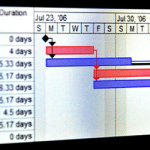
Six Sigma was a powerful quality improvement system developed by Motorola that took the world by storm in the early 2000's with high profile adoptions by General Electric, Honeywell, and others. Lean was a manufacturing methodology originated by Toyota, which turned manufacturing on its head by focusing on minimizing idling products (inventory) rather than minimizing … [Read more...]













